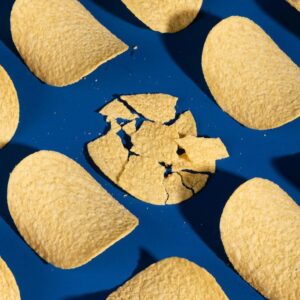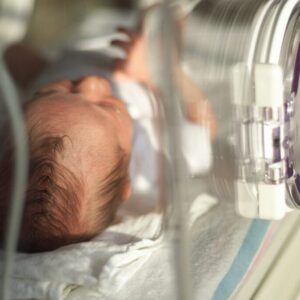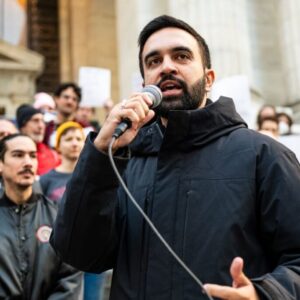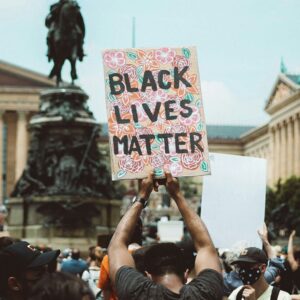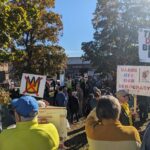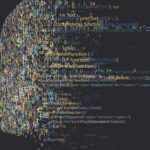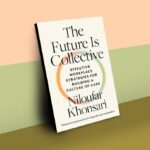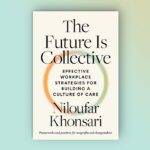
In times of undeniable disrepair like today, the paths to change can become clearer. Those of us who’ve been outside the dominant group know that while there are distinct characteristics of the moment we’re currently facing, the fight is not new, and we are only here as a result of our ancestors’ ability to succeed in the midst of relentless adversity. Looking back, we can find inspiration and reminders that creativity and innovation thrive when we find ourselves in challenging times.
As the fight for systemic federal reparations continues, there are countless ways to use capital right now as a tool for justice, healing, and repair on smaller but deeply meaningful scales. This is the essence of reparative capital: recognizing that the nation’s ongoing history of domination and extraction of African and Indigenous peoples is directly tied to the entrenched racial and ethnic inequities we see today—and then acting on that knowledge. The US colonial project stole land from Indigenous communities; stole Africans from their homeland; and stole labor, money, and the right to live self-determined lives from both groups.
Each of us authors are engaged in the struggle for repair in our own ways. fitchett is a movement artist and freelance writer who creates stories and spaces that center justice and liberation. Norwood grew up in Alabama and in 2017 founded RUNWAY Roots, a firm that offers “Believe-in-You Money,” a nonextractive approach to business lending that repairs injustice with patient, flexible, and antiracist capital. Finally, Roanhorse is a citizen of the Navajo Nation who centers Indigenous worldviews and ways of being to address complex challenges in health and wealth systems and is the founder of Roanhorse Consulting LLC.
There are countless ways to use capital right now as a tool for justice, healing, and repair on…deeply meaningful scales.
All three of us believe that action matters most. We can use capital to make tangible, positive impacts in the lives of people and communities harmed by institutional and economic oppression. And we can begin this work from wherever we stand.
Reparative Capital as a Tool of Love
Reparative capital uses investments in business to heal the wounds that result from generations of extraction. By centering Afro-Indigenous traditions of resource sharing and honoring our interconnectedness, we can work toward a new system that builds mutual concern for our fellow people into the way we do business.
Yet we currently live in a system that achieves affordability and convenience through practices rooted in extraction and exploitation. When people with limited time or capital follow the path of least resistance, it can seem as though they are complicit—if not comfortable—with exploitation, even if their thinking is more compassionate. After all, going along with the current status quo is inherently anti-Black, anti-Indigenous, anti-worker, anti-woman, and anti-planet.
In a reparative capital framework, money becomes a tool of love, justice, healing, and repair, seeking transformation instead of reform.
Anyone who is serious about showing love for Black people must move money in ways that reflect and extend that love. Trust-based philanthropy is a promising step, but reparative capital closes a gap where conventional investing has consistently fallen short by explicitly committing to justice and repair rather than simply reducing restrictions with which capital is disbursed.
What makes reparative capital truly distinct is that it’s not just a redistribution of money, but a reorientation of values. In a reparative capital framework, money becomes a tool of love, justice, healing, and repair, seeking transformation instead of reform.
Reparative Capital in Indigenous Communities
Over the past 10 years, Roanhorse Consulting LLC has designed innovative investment frameworks that center Indigenous knowledge and lived experience, Central to this focus on relationship and repair in lending is openly challenging the “5 Cs of Credit” model. The 5 Cs model considers character, capacity, capital, conditions, and collateral as indicators of credit readiness—but the way this model has been implemented has made finance more about gatekeeping than serving as a gateway.
The inequitable ways in which credit worthiness is evaluated and the terms by which credit is distributed have resulted in Indigenous people consistently either being turned away by mainstream banks or charged predatory and debilitating interest rates. These inequities have contributed to the fact that over 12 percent of Indigenous households are unbanked, as compared to the national average of 4 percent.
As a result, entire communities become trapped in cycles of debt, disempowerment, and disconnection. Even in the face of these structural barriers, Native American businesses in the United States generated over $50 billion in revenue by 2023. Despite this remarkable success against hostile odds, mainstream institutions continue to double down on discriminatory lending instead of investing in the promise that Indigenous businesses have already proven.
What successfully connects people with what they need to become financially stable and have a sense of self-determination is capital that prioritizes trust, reciprocity, and healing over punitive evaluation, extraction, and harm. Drawing from Diné (Navajo) creation stories that emphasize emerging into more aligned new realities by letting go of those that no longer serve the wellbeing of our ecosystem, Roanhorse LLC has identified four key priorities to reclaim economies:
- Building funds that reflect Indigenous worldviews
- Investing in one another, not only ourselves
- Embedding cultural safety into financial instruments
- Redefining creditworthiness through the lens of community accountability
There are deep similarities in the work of Roanhorse LLC and RUNWAY Roots. Amid a tense time of transition and uncertainty in the financial landscape and beyond, both models offer reparative frameworks that form the roots of a just, regenerative, and community-led economy.
Shifting Power in Black Communities
In addition to the clear data and trends across the field, RUNWAY Roots has seen firsthand the ways in which extractive lending practices directly and detrimentally impact Black entrepreneurs. Time and time again, entrepreneurs arrive with a level of trauma that often stems from past challenges with transactional relationships in the business world, on top of other experiences with systemic inequities. Grounded in repair, RUNWAY Roots is committed to centering the visionaries and leaders on the receiving end of the capital instead of simply prioritizing investors and their financial gains.
This commitment is reflected across the organization. With its funder manifesto, RUNWAY Roots recognizes its own position and responsibility to challenge unjust power structures within the financial ecosystem. The firm’s investment terms prioritize equitable relationships and mutual benefit rather than exploitative returns that disadvantage entrepreneurs while multiplying the wealth of investors.
RUNWAY Roots places control directly into the hands of community members at the table rather than asking them to show up and slip into other people’s ideas of what’s best for them and their communities. By providing political and financial education in cohort structures, RUNWAY Roots supports entrepreneurs and investors alike as they build strong and effective networks to shift power for economic change and systemic transformation.
The Japanese art of kintsugi offers one way to think about repair. Kintsugi is the artful process of reassembling broken pottery and embellishing the seams along which the piece has been put back together with eye-catching metallic powders.
Rather than discarding something that breaks or making attempts to mask the damage that’s been done, those who practice kintsugi demonstrate an appreciation for what came before, a concern for sustainability, and an acknowledgment of the fractures that led to the current state.
Dominant systems in the United States are missing these values. By contrast, an economy that loves Black people—and all people—would more closely reflect the values of kintsugi.
Changing the Game in Indigenous Communities
Roanhorse LLC’s work is guided by two intertwined frameworks that align with RUNWAY Roots’ practices: relationship-based capital and seed banking.
Seed banking, which has a longstanding presence within Indigenous and African traditions, is a practice of saving seeds so that future generations have access to ancestral foods and plants they need to thrive. Ancestors worked with literal seeds: braiding okra, black-eyed peas, and corn into hair before forced migrations; or hiding seeds in hems and bundles while fleeing colonization.
Roanhorse LLC applies the concept of seed banking to preserving things like cultural knowledge, governance models, capital innovations, sacred values, and entrepreneurial blueprints that honor ancestral ways.
The 5 Rs of Rematriation—relational, rooted, restorative, regenerative, and revolutionary—is an alternative to the traditional 5 Cs framework that applies the concept of seed banking to contemporary times, in alignment with Indigenous worldviews.
Roanhorse LLC is also a co-creator of Native Women Lead’s Matriarch Funds, a scaffolded lending platform that leverages character-based investment to support Indigenous women founders. In partnership with Nusenda Credit Union based in New Mexico, this microloan program has provided close to $4 million in reparative capital to Indigenous entrepreneurs.
These efforts demonstrate the transformative power of repair guided by Indigenous wisdom and provide a model for others wanting to tap into this power.
Responding to the Urgency of Repair: A Broader Perspective
Given the uncanny prescience of her cautionary writing from the 1990s, author Octavia Butler has become more widely known in recent years, despite her passing in 2006.
In a 1994 interview, Butler said that she saw the 1960s as the decade of coming together, the 1990s as the decade of disintegration, and predicted that the 2020s would be the decade of “the burn.”
“Food prices have skyrocketed. The sea level is rising. The greenhouse effect is in full swing,” she described. “This does not mean that it’s the end of the world or even the end of the US. Things are just a lot worse.”
Now, in 2025, Butler’s visions appear to be shockingly accurate. Approximately 300,000 Black women have exited the labor force, with many pushed out or laid off from public sector positions and DEI work. Options are limited, as entrepreneurship for Black workers is a steep hill to climb. While the average amount of friends-and-family funding that successful businesses rely on is $23,000, the average Black founder is only able to raise less than $1,000 from their family and friends.
Repair is needed.
Liberation Ventures, an organization supporting narrative change, Black-led racial repair, and a culture of belonging in the United States, is pushing forward with reparations. Similarly, Decolonizing Wealth is using capital to shift power to Black and Indigenous communities and repair the harms of colonialism.
Reparative capital is more than a new investment trend. It is the practice of using capital to heal the harm caused by centuries of extraction.
Others in philanthropy are playing a supportive role. The Omidyar Network, for instance, launched the Cultivating Repair Catalyst Initiative, a $12 million program for an initial cohort of 10 organizations to support the growing ecosystem working to heal the persistent harms of colonialism and slavery in the United States.
While Butler’s predictions may sound damning, they were grounded in a sense of hope that often goes hand-in-hand with clear critique of one’s environment and analysis of the potential to do better. RUNWAY Roots, Roanhorse LLC, and the other initiatives named here aim to strike a similar balance—tapping into faith in a better future and recognition that a collective commitment to that vision is long overdue.
The Promise of Repair
Reparative capital is more than a new investment trend. It is the practice of using capital to heal the harm caused by centuries of extraction that facilitated the generation of that capital in the first place. It is a recognition that money carries history—and that how we move it today can either replicate injustice or repair it. Reparative capital asks us to center the communities who have borne the brunt of economic violence; redistribute resources; and build systems where care, trust, and liberation are the true measures of return.
For institutions—community development financial institutions (CDFIs), foundations, investors, and public agencies—this is the moment to choose transformation over tinkering. A reparative approach to capital demands centering trust rather than risk aversion, building governance with communities rather than for them, and funding relationships as much as transactions. It calls on those in positions of power to invest in infrastructure, not just short-lived pilots, and to measure impact in terms of liberation and self-determination, not only return-on-investment. The tools already exist; the question is whether impact investors and funders will use them with courage and consistency. We hope that your answer will be yes.
For communities, reparative capital affirms what many already know: Our stories, practices, and visions are capable of seeding a different economy and deserve the investment required to get there.
“Seed banking” is more than a metaphor. It’s the way we preserve what matters—our values, intentions, and blueprints for living—and pass them forward. These seeds are the components of a brighter and more just future. When we create the right conditions, they will grow into institutions, cooperatives, and movements that look like us and work for us.
